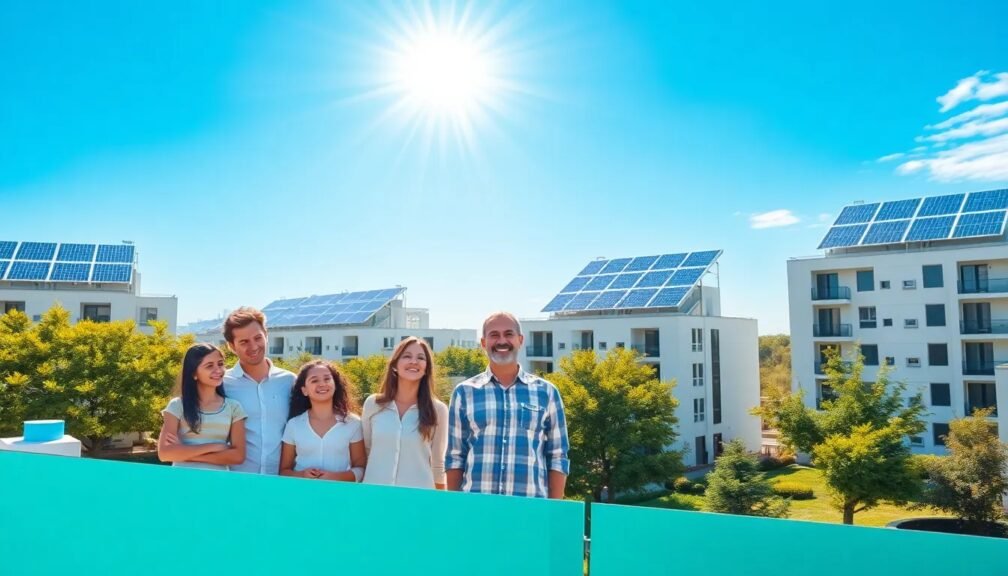In an era where sustainability is paramount, the quest for renewable energy sources has never been more urgent. Among the most innovative solutions is the utilization of photovoltaic systems—technology that transforms sunlight into usable electricity. In this article, we will delve into the fundamentals of photovoltaic systems, their benefits, various applications, and how they can revolutionize your energy strategy today.
Understanding Photovoltaic Systems
What are Photovoltaic Systems?
Photovoltaic systems consist of solar panels that convert sunlight directly into electricity using the photovoltaic effect. When solar cells, typically made from silicon, absorb photons, they release electrons, generating a flow of electricity. This technology not only provides a sustainable energy source but also creates opportunities for energy independence and savings.
The Components of Photovoltaic Systems
A standard photovoltaic system includes:
- Solar Panels: The most visible part of any photovoltaic system, solar panels are composed of many solar cells arranged together.
- Inverters: These devices convert the direct current (DC) produced by solar panels into alternating current (AC), making it usable for household appliances.
- Mounting Structures: These are used to secure solar panels in place, ensuring they receive optimal sunlight.
- Monitoring Systems: These allow you to track energy production and consumption, ensuring your system operates efficiently.
The Benefits of Photovoltaic Systems
Energy Independence
One of the primary motivations for adopting photovoltaic systems is the potential for energy independence. By generating your own electricity, you reduce reliance on conventional power sources, insulating yourself from fluctuating energy prices.
Financial Savings
Investing in photovoltaic systems can yield substantial long-term savings. While the initial cost may seem daunting, government incentives, tax credits, and falling solar panel prices make this investment increasingly accessible. Homeowners often experience reduced electricity bills, allowing them to recoup their investment in as little as five to seven years.
Environmental Impact
Switching to solar energy significantly reduces your carbon footprint. Photovoltaic systems are a clean source of energy, producing no greenhouse gas emissions during operation. By making the switch, you contribute to a healthier planet and a sustainable future.
Versatility and Scalability
Photovoltaic systems are incredibly versatile. They can be installed on rooftops, integrated into building materials, or set up as ground-mounted systems in open spaces. Whether you’re a homeowner or a business, these systems can be scaled according to your energy needs.
Applications of Photovoltaic Systems
Residential Use
For homeowners, installing photovoltaic systems can dramatically alter energy consumption. With technologies like net metering, surplus energy produced during the day can be sent back to the grid, further supporting energy savings.
Commercial Utilization
Businesses can also benefit significantly from photovoltaic systems. A commercial solar installation can reduce operating costs, improve building sustainability ratings, and enhance public image. Companies that adopt solar are often viewed as leaders in corporate social responsibility.
Off-Grid Solutions
For remote areas lacking reliable electricity, photovoltaic systems offer an excellent off-grid solution. Solar panels provide energy where conventional utility infrastructure is absent, empowering communities with sustainable electricity.
How to Implement Photovoltaic Systems
Assess Your Energy Needs
The first step in implementing a photovoltaic system is to evaluate your specific energy requirements. Review historical energy consumption data and determine how much energy you wish to generate.
Choose the Right System
Once you’ve evaluated your needs, you can choose from various types of photovoltaic systems:
- Grid-Tied Systems: These systems are connected to the electricity grid, allowing you to sell excess power back to the utility company.
- Off-Grid Systems: Ideal for remote locations, these systems are not connected to the grid and rely on storage batteries to keep the power flowing.
- Hybrid Systems: A combination of both grid-tied and off-grid systems, these allow flexibility and reliability.
Seek Professional Installation
While DIY solar panel installation is an option, it’s often best to consult with professionals. Certified installers will ensure that your system is optimally designed and adequately installed, maximizing energy production and minimizing safety risks.
Take Advantage of Incentives
Many governments offer various incentives to foster the adoption of renewable energy. Research local and federal tax credits, grants, and rebates that can reduce the upfront costs of your photovoltaic system.
Maintenance and Monitoring
Regular Checks
One of the advantages of photovoltaic systems is their low maintenance requirements. However, regular checks can help maintain efficiency. Clean any dirt or debris from the solar panels, as this can affect performance.
Monitor Performance
Utilizing monitoring systems will help you keep track of how much energy your photovoltaic system is generating. If you notice significant fluctuations, you may need to consult a professional to identify underlying issues.
Future Trends in Photovoltaic Systems
Technological Advancements
The photovoltaic industry is rapidly evolving, with continuous improvements in solar cell efficiency and energy storage technologies. Bifacial solar panels, which can capture sunlight on both sides, and perovskite solar cells are on the rise, promising even greater energy yields.
Integration with Smart Technologies
Smart home technologies are increasingly integrating with photovoltaic systems. Home automation can optimize energy usage patterns, ensuring that homes are powered efficiently and sustainably.
Conclusion: Taking Action Toward a Sustainable Future
Transitioning to photovoltaic systems is not just a trend; it’s a vital step toward a sustainable future. By making the switch, you can significantly reduce your energy costs, lessen your environmental impact, and even gain energy independence.
Actionable Insights
- Evaluate Your Energy Consumption: Start by understanding your energy needs.
- Research Local Policies: Investigate local incentives and rebates for photovoltaic installations.
- Consult with Experts: Seek professional advice for system design and installation.
- Stay Informed on Trends: Keep an eye on the latest advancements in solar technology.
By following these steps, you are not just transforming your own energy strategy but also contributing to a cleaner, greener planet. The future of energy is bright, and photovoltaic systems play a leading role in that narrative. Embrace this change today and make a positive impact on your wallet and the environment.



